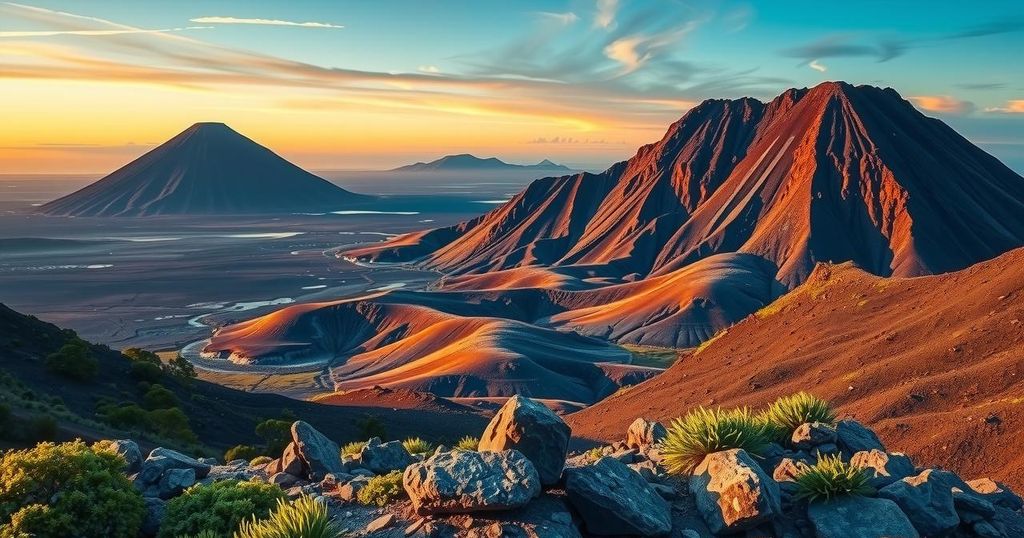Understanding Ethiopia’s Earthquakes and Volcanic Activity: A Geological Perspective

Ethiopia experiences earthquakes and volcanic activity due to its location along the East African Rift, stemming from geological processes that have occurred over millions of years. Recent seismic events, particularly near Fentale, have resulted from molten rock moving beneath the Earth’s crust, posing risks of future eruptions. Enhanced monitoring and community cooperation are essential for disaster preparedness.
Ethiopia’s seismic and volcanic activities are primarily attributed to geological processes that have been underway for millions of years, particularly along the East African Rift Valley. Geologist Gemechu Bedassa Teferi explains the dynamics behind these phenomena, highlighting the region’s significance as a natural laboratory for geological study.
The creation of earthquakes and volcanic eruptions in Ethiopia can be traced back 18 million years to the breakup of continents that formed the Red Sea and the Gulf of Aden. Approximately 11 million years ago, a fissure emerged beneath the Afar Depression in northeast Ethiopia, setting the stage for ongoing geological activity.
The Mantle beneath the Ethiopian region is composed of a hot, semi-solid layer that is consistently in motion, driven by internal heat. This activity facilitates the ascent of molten rock through weaknesses in the crust, resulting in volcanic eruptions, while simultaneously causing the ground to move apart, creating rifts. Such movements can culminate in earthquakes, as stress builds until it is released as seismic waves, leading to ground tremors.
Currently, the Afar region is recognized as one of the globe’s most tectonically active areas. Recent seismic events near Fentale, alongside the Dofan area, exemplify the ongoing rise of molten rock. While no eruptive activity has occurred recently, over 200 earthquakes with magnitudes exceeding 4 have been noted in a five-month span, with the strongest tremor registering at 6 on the Richter scale.
The magnitude of earthquakes in Fentale has resulted in significant structural damage to buildings, schools, and infrastructure, impacting even residents in Addis Ababa, located nearly 190 kilometers from the quake’s epicenter. Historical records indicate that the strongest earthquake since 1900 occurred in 1989, measuring 6.5. The last eruption at Fentale took place in 1820, and historically, earthquakes often precede volcanic activity, raising concerns about potential future eruptions.
Scientists utilizing satellite radar technology have determined that the recent seismic activity is linked to molten rock pushing upward from depths of approximately 10 kilometers. The possible outcomes from this activity depend on various factors, such as temperature, viscosity, and the resistance of surrounding geological materials.
Three scenarios could unfold under Fentale: 1) cooling of the molten rock, resulting in solidified material; 2) potential eruptions if the molten rock forces its way to the surface; or 3) lateral propagation of the molten material that could interact with other magma sources, possibly leading to a significant eruption.
Given the unexplored variables in this geologically dynamic environment, enhanced prediction methods are essential to mitigate risks. Scientists advocate for improved monitoring technologies, including volcanic gas analysis and geophysical assessments. An effective communication system involving collaborative efforts between scientists and authorities is crucial to inform and prepare communities at risk.
In conclusion, Ethiopia’s seismic and volcanic activities stem from complex geological processes inherent in the East African Rift Valley. The region’s unique mantle dynamics lead to both rifting and earthquakes, with potential for future volcanic eruptions. To ensure community safety, it is vital for scientists to continue monitoring these geological phenomena and for government officials to establish effective communication strategies with affected populations.
Original Source: www.downtoearth.org.in






